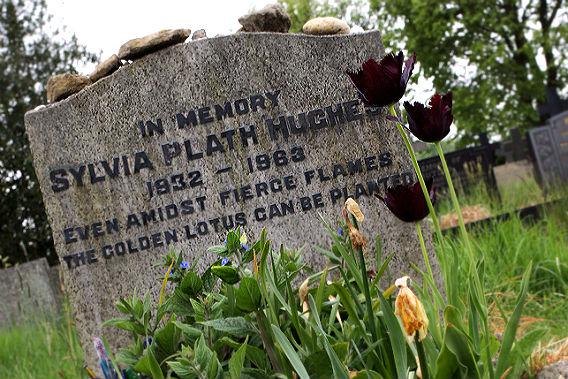On Monday Vice magazine published a photo spread that depicted seven woman writers before, during, or after their suicides. By Tuesday morning, it was taken down, amid outrage. But the images of models dressed like Virginia Woolf, Sylvia Plath, the Taiwanese author Sanmao, Iris Chang, Charlotte Perkins Gilman, Elise Cowen, and Dorothy Parker posed with the instruments of their deaths (a gun, an oven, a chloroform handkerchief) live on around the Web, where writers have been wrestling, some more seriously than others, with whether it’s ever OK to represent suicide in art.
Before we get to that question, though, a quick note about where it is not OK to depict suicide: a fashion spread. Using the personal tragedies of real people to sell clothes would be foul even if it didn’t require Vice to glamorize suffering or enforce a connection between beauty and frailty or reduce literary icons to how they looked when they died. Vice magazine, please find a different way to be edgy.
Interestingly (predictably) Vice did not frame their decision to run the images as a commercial one. In the statement accompanying the removal of the spread, they invoked the Cause of Art.
The fashion spreads in VICE magazine are always unconventional and approached with an art editorial point-of-view rather than a typical fashion photo-editorial one. Our main goal is to create artful images, with the fashion message following, rather than leading.
Which, as flimsy as it sounds as justification, does prompt the question: Under what circumstances are we comfortable with representations of suicide? In a beautiful piece for New York magazine’s The Cut, Michelle Dean argues that artistic portrayals of the act are more than OK—they’re necessary. Authors such as Woolf and Plath endure in part for their unflinching honesty about what it is to face the dark. These writers break “social codes about depression and self-destructiveness,” showing us that women needn’t always be “quiet, demure, and obedient,” that their problems don’t always have tasteful resolutions.
Fine. Amen. But if Vice wished to shatter the guilty hush surrounding suicide, it could have been a lot more thoughtful about it. (Dean concurs.) Instead the magazine chose to aestheticize self-destruction, inviting us to sigh over these lovely, doomed creatures rather than take steps to address depression as a mental health issue.
Dean defends the Vice photos on the grounds that “they don’t ‘glamorize’ anything. They are bland, anaesthetized, boring.” I wish I agreed. But the models are lithe and attractive, in stylized postures. Some, such as the image of Sanmao pulling a noose of stockings around her neck, even look sexy. Add to this the fact that magazine photography in general is so tied to feminine aspiration, and you can’t escape a kind of fetishization of the subject matter. Sure, one could argue the images have an ironic cast—they are commenting on the objectification of woman writers and the romanticization of their problems—but that seems like a cop-out: I didn’t see any irony in the snapshots. I just see famous authors turned into beautiful, violated bodies: an exploitative impulse reproduced seven times and wrapped in fancy clothes.
